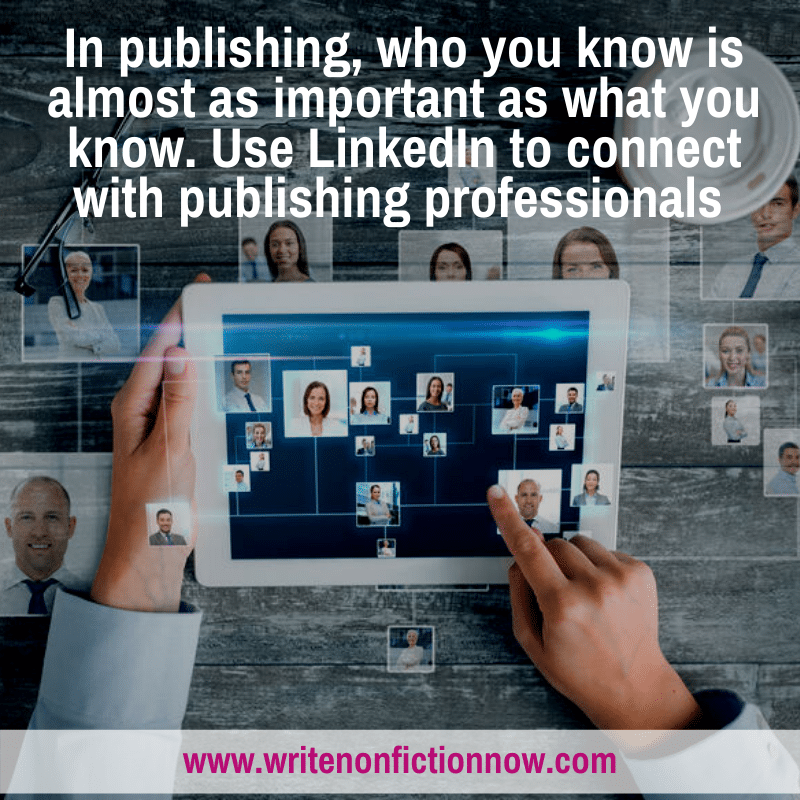Within the publishing community, who you know is almost as important as what you know. Yes, it is essential to pitch an excellent book proposal or manuscript to the right publisher. As an editor and an author, though, I also understand that people buy (books or manuscripts) from people they know, like, and trust.
That means aspiring authors, like you, need to know more publishing professionals.
Publishing Professionals Aren’t Stationary
However, even if you know a lot of publishing professionals, it’s a challenge to keep track of them. During my publishing career, I’ve found that they move around a lot.
This constant movement can make it hard to use connections to land a book deal. It also can affect a book deal you’ve already garnered.
Years ago, one of my six-figure book deals was canceled because my New York editor had changed companies. My book was orphaned or without an editor directly responsible for my project. It taught me the importance of having a champion within the publishing house for each book.
Connect with Publishing People on LinkedIn
How does a new author with no connections begin to get connected to publishing professionals? Of course, you can attend a writing or publishing conference. But, if that’s not possible, there are other ways.
Specifically, everyone can use a social network that has over 575 million users: LinkedIn. This network is primarily business-related, and publishing is a business.
To get connected on LinkedIn, you need to take several actions:
- Rework your LinkedIn profile to show your activity in publishing. Do you write for magazines? Have you published books? Perhaps you have some other explicit publishing role, such as leading a local writer’s group. If you have these types of qualifications, then add them to your LinkedIn profile.
- Begin to send connection requests to different people in publishing. These people could be book editors, literary agents, magazine editors, authors, or people in many other roles. In some cases, you will want to send them a little personalized message with your invitation. In other cases, send out the generic invitation provided by LinkedIn that notifies someone that you want to connect.
Accept LinkedIn Invitations
For many years, I received LinkedIn invitations and ignored them. I had very few connections on LinkedIn. Then, I began to look at the background of the person who requested connection, and I accepted the majority of these invitations.
My number of connections increased. And my public profile soon said, “over 500 connections,” the standard notification on a LinkedIn profile for anyone reaching that connection level or higher. The actual number of my LinkedIn connections, as of this writing, is over 12,100. My LinkedIn connections are varied, and people have many different roles (mostly within publishing).
Why You Want LinkedIn Connections
I discovered a critical reason to be connected to publishing professionals on LinkedIn. When I need to reach someone I’ve not emailed or called in a long time, I can find current information on this site. I only need to check their LinkedIn contact information.
As I said, there is a lot of movement within the publishing community. People change jobs frequently. But when publishing people change positions, companies, or physical location, they take their LinkedIn account with them. This account belongs to the individual and is typically updated to indicate their new position and the company for whom they work.
That means that LinkedIn profiles provide a way to consistently keep up with and reach these publishing connections—no matter where they work or what they are doing in the publishing arena.
LinkedIn has a lot of other functions as well, but being connected and maintaining those connections is one of the fundamental and best reasons to consistently use this network. This social networking site can prove essential to making the connections you need to get published.
Have you tried connecting with publishing people via LinkedIn? Tell me in a comment below. (And, if you found this post helpful, please share it with at least three people.)
About the Author
 W. Terry Whalin, a writer and acquisitions editor, lives in Colorado. A former magazine editor and former literary agent, Terry is an acquisitions editor at Morgan James Publishing. He has written more than 60 nonfiction books including Jumpstart Your Publishing Dreams and Billy Graham. To help writers catch the attention of editors and agents, Terry wrote his bestselling Book Proposals That $ell, 21 Secrets To Speed Your Success. Check out his free Ebook, Platform Building Ideas for Every Author. His website is located at www.terrywhalin.com. Connect with Terry on Twitter, Facebook and LinkedIn.
W. Terry Whalin, a writer and acquisitions editor, lives in Colorado. A former magazine editor and former literary agent, Terry is an acquisitions editor at Morgan James Publishing. He has written more than 60 nonfiction books including Jumpstart Your Publishing Dreams and Billy Graham. To help writers catch the attention of editors and agents, Terry wrote his bestselling Book Proposals That $ell, 21 Secrets To Speed Your Success. Check out his free Ebook, Platform Building Ideas for Every Author. His website is located at www.terrywhalin.com. Connect with Terry on Twitter, Facebook and LinkedIn.
Photo courtesy of dolgachov

Sajan Kota says
Hi Terry, Very good blog post. It is very true that you know is almost as important as what you know. There is a common misconception that LinkedIn is only for HR professional and job seekers. However fact is LinkedIn can be used to build professional relationships and business connections.